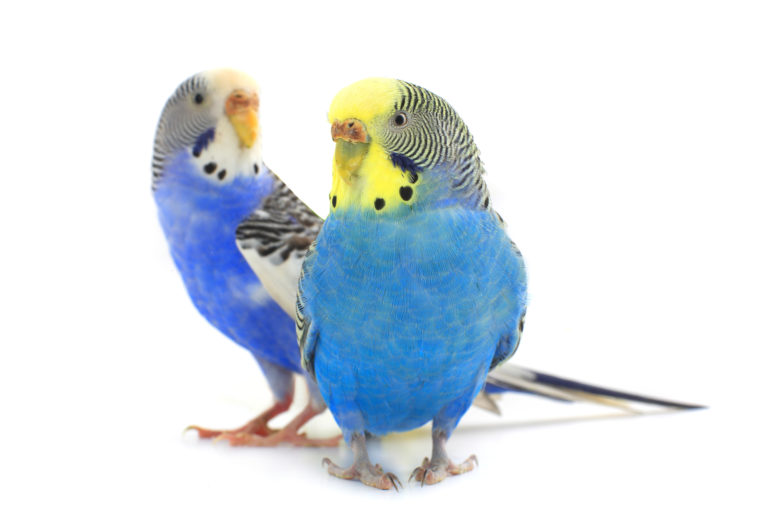Budgies are some of the most popular pets around, so it may seem only natural that having chicks would make them even more well-loved. However, there are a few key points to consider before you look into breeding your budgies.
Considerations before each brood
- Your budgie should not have more than two broods per year, or the strain placed on the female’s body can prove to be too great
- Budgies can be bred from the age of 10 months
- Ask yourself the question, “What will happen to the young birds?” Do you personally have enough space and time to take care of them, or do you have a trusted destination where the young will be cared for and raised properly?
Nesting boxes
Once you have decided to breed, you need to provide your birds with a nesting box, making sure it meets the requirements of the female. Darkness is required to ensure the female hormones for ovum maturation are stimulated. Your budgies do not need any materials, as they do not build nests, but the box should contain a tray in which the bird can lay her eggs. A great choice is a nesting box with an inbuilt screen, which can be opened from time to time so that you can check on the progress and ensure everything is in order. You will want to disturb the birds as little as possible in this important time, keeping the screen open for no longer than a few minutes at a time.
Oviposition and brood
If everything has been successful, the female budgie will lay 4-7 eggs within two weeks of mating. The mother will now begin a period of isolation, leaving the nesting box only to go to the toilet. The male will protect his partner during this time, feeding her and guarding his young.
Hatching
After about 18 days, things get exciting and the chicks start to hatch! They use their egg teeth to poke holes in the shell, calling for their mother with a cheeping sound. This alerts the mother to the fact that they are hatching, so that she can offer assistance in removing the remaining shell if necessary. Once the chicks have made their way out of their eggs, the mother will feed them and keep them warm. At this stage they weigh just two grams and are both naked and blind. You should now begin to check the nest more regularly, ensuring that any dead chicks do not remain in the nest.
Rearing
The mother budgie remains in the nesting box for feeding and rearing her little ones. The male provides food for both mother and chicks, but does not take part in the family life going on inside the box. As long as you are providing your birds with nutritious food containing all the nutrients needed, you should not need to invest in a specific rearing food. After just 17 days, the young birds should have reached an adult weight of around 40g and will be developing fast!
Loving siblings
What really makes the budgie family stand out is the way in which the young birds interact with one another. Within around three weeks, the siblings will be crawling and feeding each other. Younger birds will be fed by the older ones, allowing the birds to develop their social behaviour through joint play and exploration.
Leaving the nest
At the age of around 4-5 weeks, the young birds will begin their first ventures into the outside world, taking part in initial test flights and becoming fledglings. They leave the safety of the nesting box to discover the great wide world around them! However, they will continue to be fed by their parents until they can eat seeds and grains alone, so should not be separated until after this point. This is normally at around 8 weeks, although it can vary from bird to bird.
Now they are ready to begin a new and happy life!
